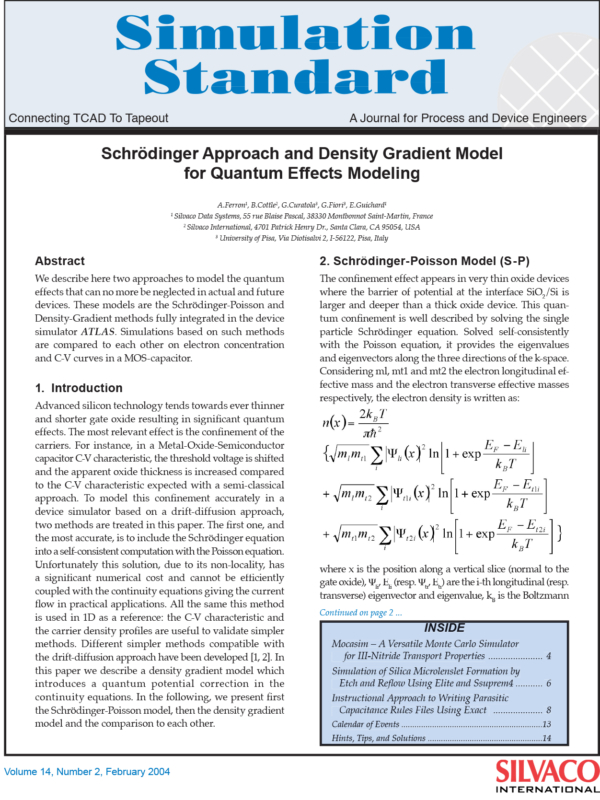Schrödinger Approach and Density Gradient Model for Quantum Effects Modeling
A.Ferron1, B.Cottle2, G.Curatola3, G.Fiori3, E.Guichard1
1 Silvaco Data Systems, 55 rue Blaise Pascal, 38330 Montbonnot Saint-Martin, France
2 Silvaco International, 2811 Mission Blvd. 6th Floor, Santa Clara, CA 95054, USA
3 University of Pisa, Via Diotisalvi 2, I-56122, Pisa, Italy
Abstract
We describe here two approaches to model the quantum effects that can no more be neglected in actual and future devices. These models are the Schrödinger-Poisson and Density-Gradient methods fully integrated in the device simulator ATLAS. Simulations based on such methods are compared to each other on electron concentration and C-V curves in a MOS-capacitor.
Introduction
Advanced silicon technology tends towards ever thinner and shorter gate oxide resulting in significant quantum effects. The most relevant effect is the confinement of the carriers. For instance, in a Metal-Oxide-Semiconductor capacitor C-V characteristic, the threshold voltage is shifted and the apparent oxide thickness is increased compared to the C-V characteristic expected with a semi-classical approach. To model this confinement accurately in a device simulator based on a drift-diffusion approach, two methods are treated in this paper. The first one, and the most accurate, is to include the Schrödinger equation into a self-consistent computation with the Poisson equation. Unfortunately this solution, due to its non-locality, has a significant numerical cost and cannot be efficiently coupled with the continuity equations giving the current flow in practical applications. All the same this method is used in 1D as a reference: the C-V characteristic and the carrier density profiles are useful to validate simpler methods. Different simpler methods compatible with the drift-diffusion approach have been developed [1, 2]. In this paper we describe a density gradient model which introduces a quantum potential correction in the continuity equations. In the following, we present first the Schrödinger-Poisson model, then the density gradient model and the comparison to each other.



